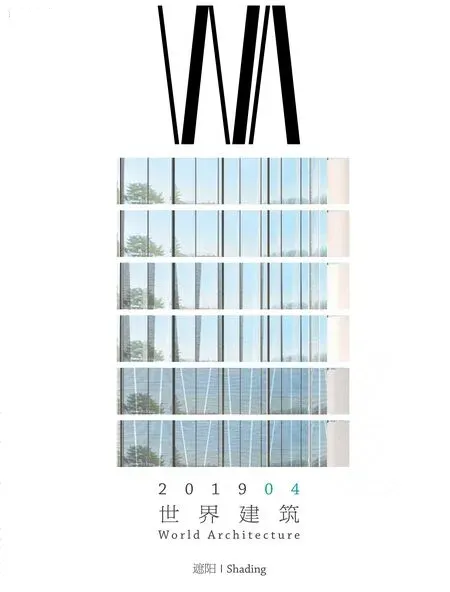沙里夫哈住宅,德黑兰,伊朗
2019-05-28建筑设计下一个建筑工作室
建筑设计:下一个建筑工作室
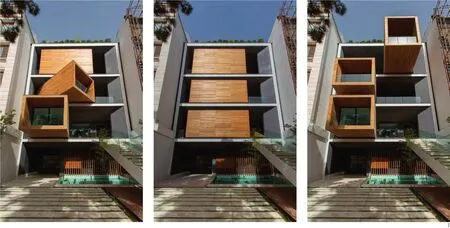
1 动态立面/Dynamic façades
沙里夫哈住宅设计理念的核心是不确定性和灵活性。室内空间的氛围和品质加之颇为形式化的外观,是对建筑体旋转空间的直接回应,可开启/闭合的旋转体使其获得或内向或外向的特征。这些变化会随季节更迭或平面功能场景的变化而发生。
与许多其他城市地块一样,该项目用地的面宽明显短于进深。因此,在将二维立面向三维立面转换的过程中,我们的专业知识变得不可或缺。可开启/闭合的体块参考了伊朗的传统住宅,使其能够为居民提供季节性的动态居住模式——冬季客厅泽曼斯坦和夏季客厅塔巴斯坦。夏季,沙里夫哈住宅提供了一个开敞、通透、多排风孔且带有宽大露台的空间。与之相对,在德黑兰寒冷多雪的冬天,该体块可自行闭合,在完全不需要夏季露台的情况下提供最小的开口。该项目挑战了类型学中内向与外向的概念,使居住建筑令人兴奋的空间转换成为可能。
住宅共7层,两层地下室分别用于家庭聚会和健身,首层是停车场及客房。公共活动都集中在二三层,四五层则是房主起居的私密空间。
项目由固定结构空间、中庭空隙、固定空间和移动空间4部分组成。当旋转体闭合时,住宅经由中庭空隙获得采光,同时也将两个固定空间连接起来。
该住宅能适应居住者不同的功能需求。例如,位于三层的客房可根据不同使用目的重新配置。位于二层旋转体内的办公空间和四层旋转体内的餐厅,均可根据使用者的意愿改变其形式。换句话说,总有不同的场景可以满足季节或光线条件的变化,其中一些功能已涵盖在BMS程序中。
设计之初,我们注意到室外有3棵松树可以很好地融入室内空间。现在,当住宅处于“开启模式”时,窗与树形成了令人愉悦的框景。退红线约3m后,我们得以为置于地下的玻璃水景提供充足的日光。健身区位于水景和地下泳池之间,经过反射的粼粼水影充满了整个空间。
将工业技术应用在旋转装置上其实很简单。类似的形式也被用来调节舞台场景,并应用在伊朗车展、钢构企业及船舶行业的地面调控当中。栏杆细部及通风控制,是研发旋转体时需要考虑的主要问题。设计折叠式的栏杆并细化箱体边缘,成为切实可行的解决方案。
鉴于该建筑的特性,必然有其定制的结构系统。在对结构进行数字建模后,我们进行了一系列SAP2000分析,来检查所提议系统的静态及动态性能。可移动的部分组件是该结构的显著特征,这也是德国结构制造商首先要考虑的事情。全部荷载都传导在客厅的梁上。
由于旋转体的构造各不相同,其载重是根据系统最大荷载值计算的。此外,为防止结构形变,在结构设计/计算过程中也对旋转体可能发生的振动进行了管控。
该住宅被命名为沙里夫哈,是为致敬传统的伊朗府邸。(天妮 译)
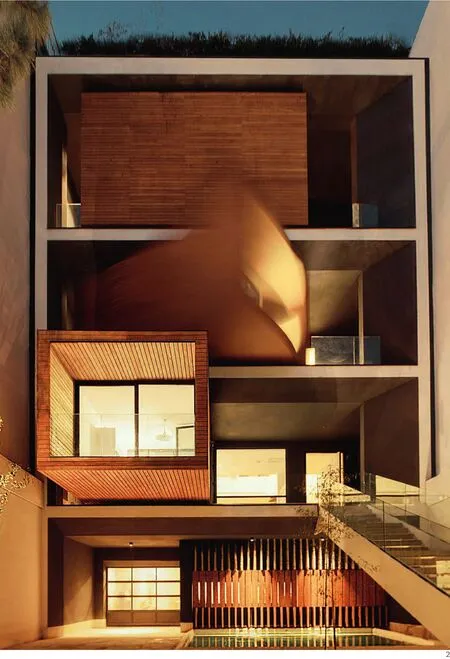
2 动态立面/Dynamic façades
Uncertainty and flexibility lie at the heart of the design concept in Sharifi-ha House. The sensational,spatial qualities of the interiors, as well as the formal configuration of its exterior, directly respond to the displacement of turning boxes that lead the building volume to become open or closed, obtaining introverted or extroverted character. These changes may occur according to changing seasons or functional scenarios of floor plans.
Like many other urban plots, the land for this project had a noticeably narrow façade-width compared with its length. Consequently, our expertise in transforming a two-dimensional façade to a threedimensional one became indispensable. Here, the openness /closure of the building volume is a reference to traditional Iranian houses, which would dynamically serve as seasonal modes of habitation by offering both a Zemestan-Neshin (winter living room) and Taabestan-Neshin (summer living room) to their residents. In summertime, Sharifi-ha House offers an open/transparent/perforated volume with wide,large terraces. In contrast, during Tehran's cold, snowy winters the volume closes itself, offering minimal openings in total absence of those wide summer terraces. In this project, the challenges to the concepts of open/closed typology (introverted/extroverted character) led to an exciting spatial transformation of an ever-changing residential building.
The House is distributed over seven floors: the two basement floors are allocated to family conviviality,fitness facilities, and wellness areas, while the ground floor hosts parking and housekeeping rooms. Public activities all happen on the first and second floors, and the family's private life takes place on the third and fourth floors.
The project consists of four major parts; the fixed volume of the structure, the void, and the fixed volume and the mobile volume, respectively. When the turning boxes are closed, the building captures sunlight throughout the space of the central void, which also connects the two fixed volumes by suspended bridges.
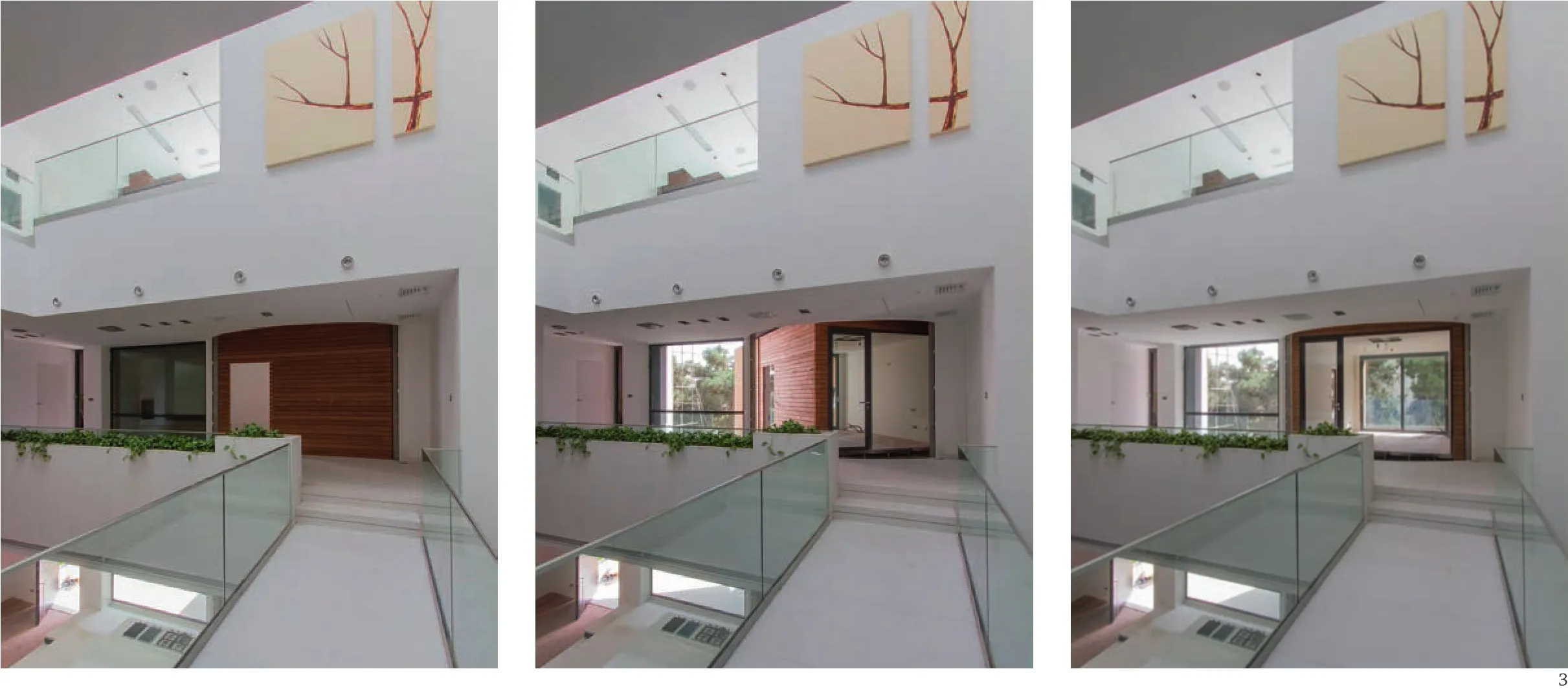
3 动态立面/Dynamic façade
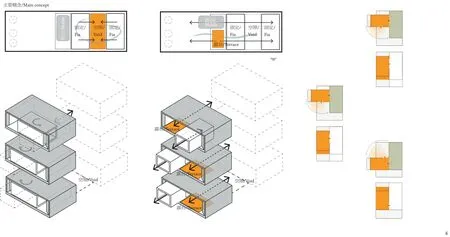
4 分析图/Diagram
The house adapts to the functional needs of its residents. For instance, depending on whether there is a guest or not, the guest room (located on the second floor) can be reconfigured for different purposes. Similarly, home office and breakfast room(turning rooms on the first and third floors) can change the formality of their appearance according to their residents' desire. In other words, there is always the possibility of having different seasonal or lighting scenarios, some of which have been already considered in the BMS program of the project.

5 外景/Exterior views
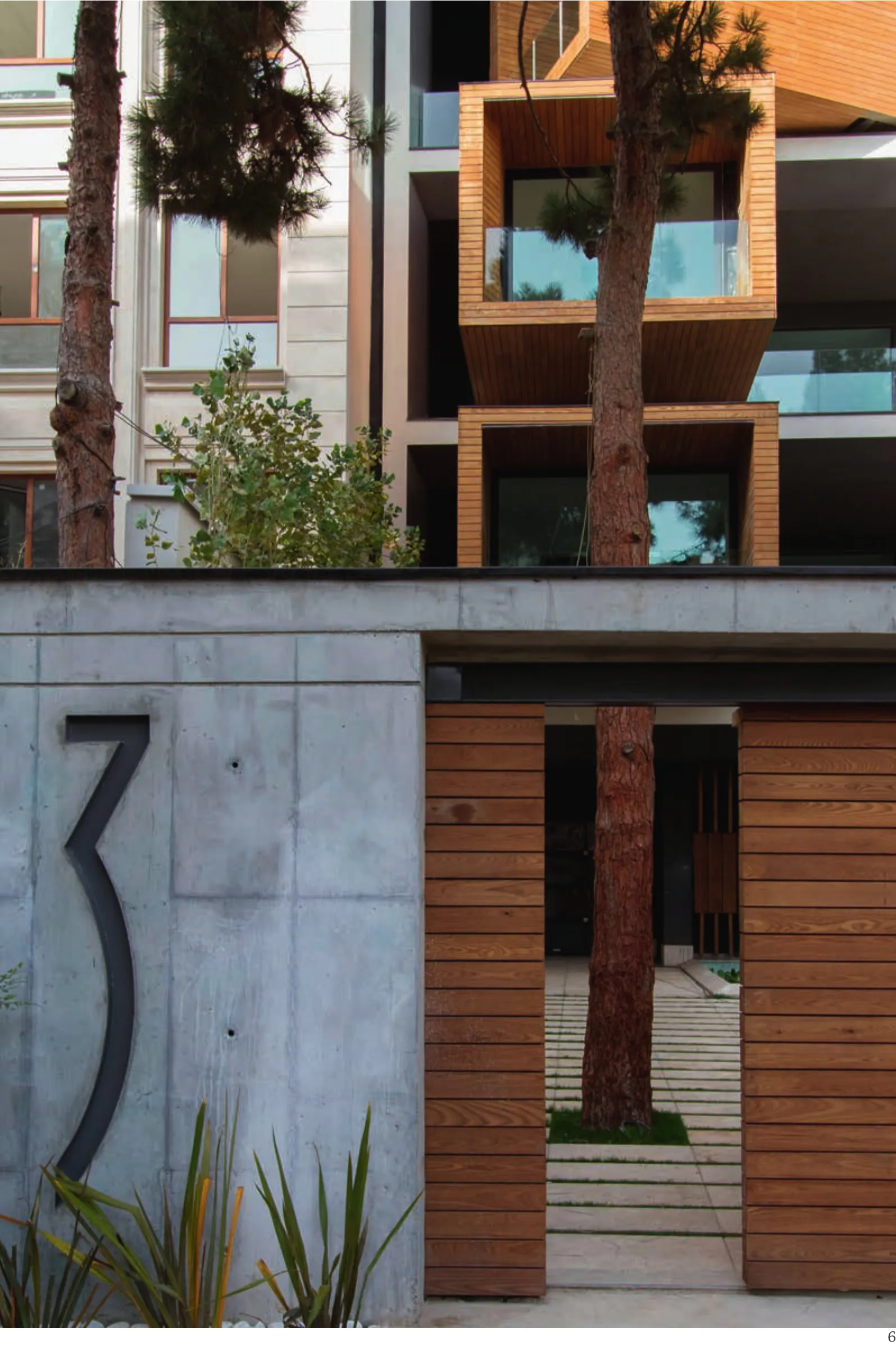
6 外景/Exterior views
From the initial design steps, we noticed that three pine trees outside could be incorporated into the spaces of the interior. Now, in the open mode of the house, the trees are pleasantly captured by the window frames. Stepping back for about three metres from the permitted construction boundary line allowed us to provide splendid daylight for the basement floors by inserting a glass fountain. The fitness and wellness areas are accommodated between this fountain and the basement pool where reflective installations reverberate the water's radiance all over the space.
The applied manufacturing technique for the turning mechanism was in fact a simple one; the same method which is currently employed in turning theatrical scenes, turning the floor of car exhibitions,steel companies and the shipping industry in Iran.Details of the handrails and air-penetration controlling methods were major issues considered in developing the design of the turning boxes. Designing foldable handrails and refining the edges of the boxes happened to be our feasible solutions.
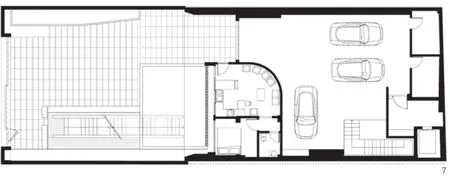
7 首层平面/Ground floor plan
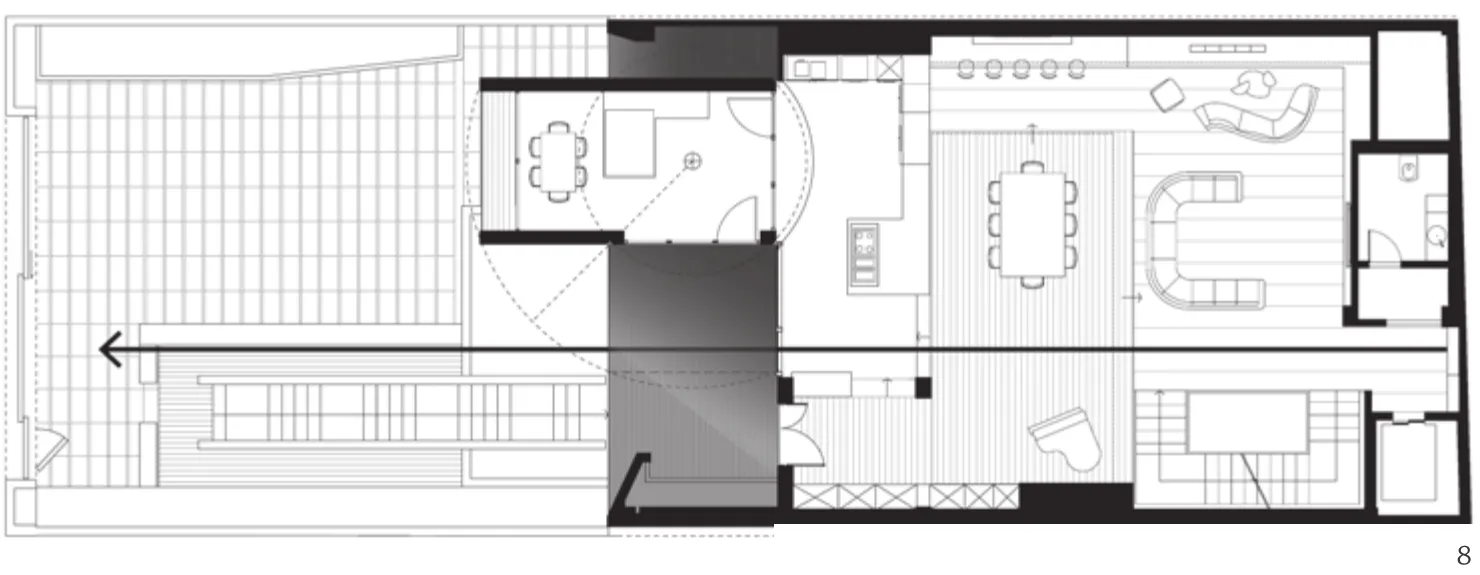
8 二层平面/First floor plan
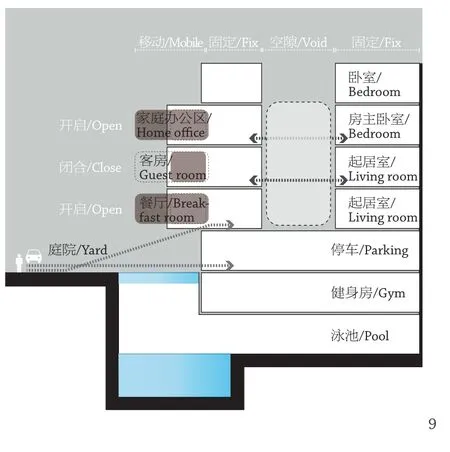
9 分析图/Diagrams
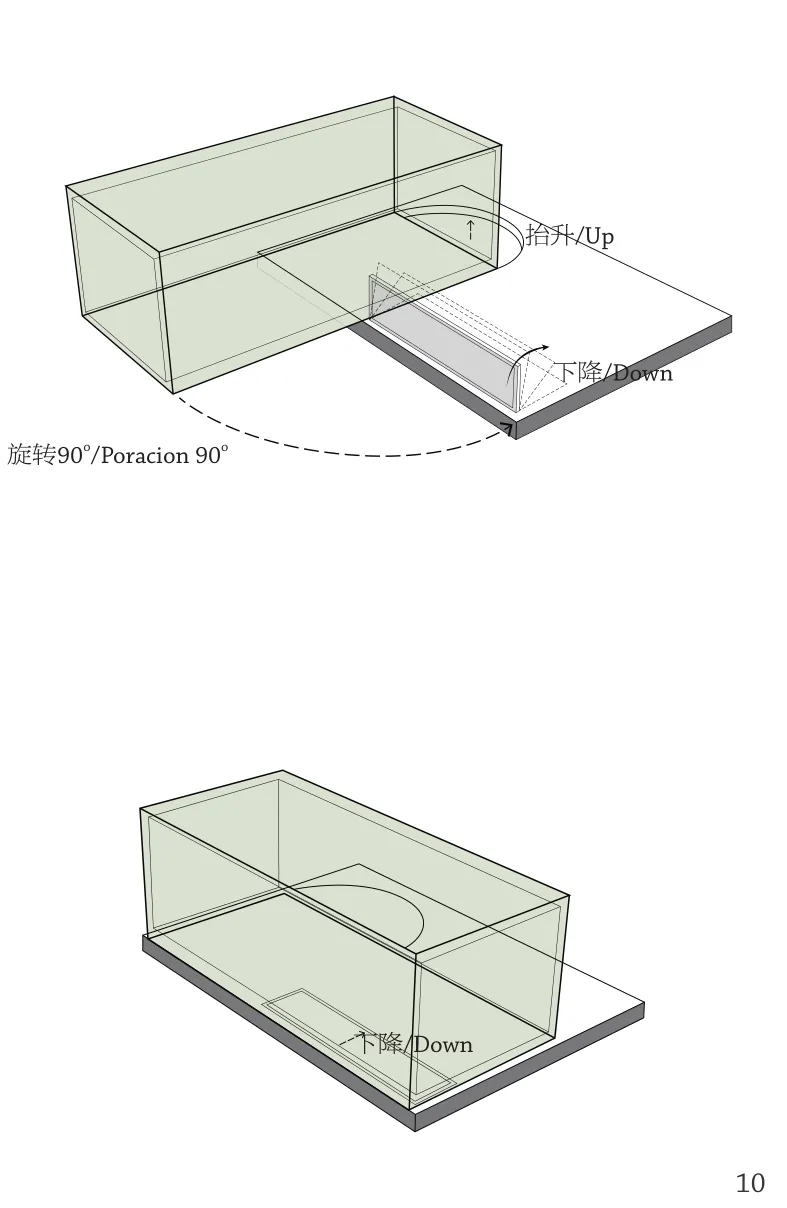
10 分析图/Diagrams
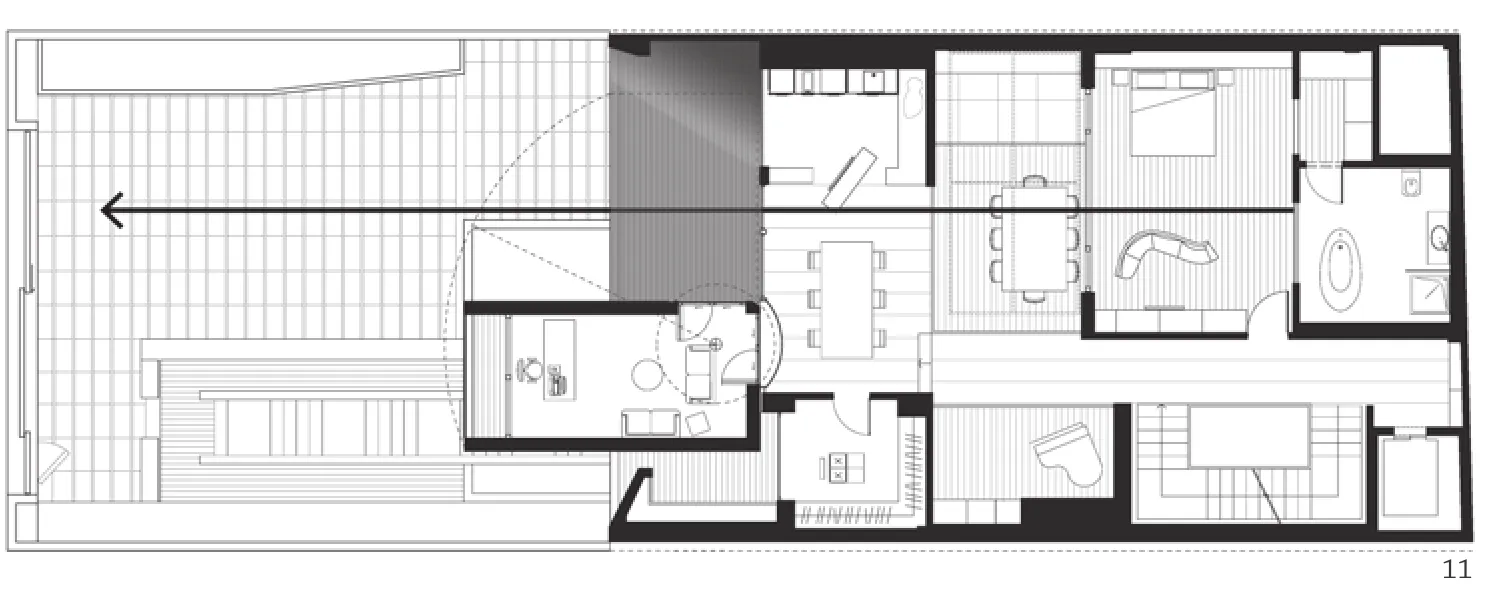
11 四层平面/Third floor plan
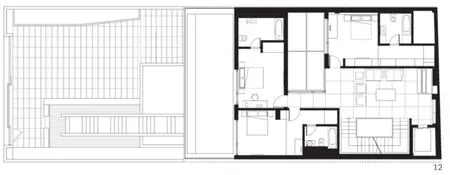
12 五层平面/Fourth floor plan

13 内景/Interior view
Considering the specialties of this kind of architecture, the structural system was inevitably a customised one. After digitally modeling the structure,a series of SAP2000 analysis were undertaken to examine static/dynamic performance of the proposed system. Being partially moveable is the dominant feature of this structural assembly, which was contemplated throughout the fabrication process by the German manufacturer company. The main loads all rest on the beams of the living rooms.
项目信息/Credits and Data
客户/Client: Mojgan Zare Nayeri, Farshad Sharifi Nikabadi设计团队/Design Team: Alireza Taghaboni, Rouholah Rasouli, Farideh AghaMohammadi, Shahnaz Goharbakhsh,Mojtaba Moradi, Negar Rahnamazadeh, Asal Karami,
Due to the various configurations the turning boxes may take, the loading calculation has been estimated based on the largest possible loading value applied to the system. Additionally, in order to prevent structural deformation, controlling the probable vibrations in the turning boxes was taken into account during the design/calculations of the structure.
The house was titled Sharifi-ha House, in honor of traditional Iranian mansions.
Majid Jahangiri, Masoud Saghi, Hossein Naghavi, Fatemeh Tabatabaeian, Iman Jalilvand
细部设计助理/Detailing Design Associates: Hamid Mohammadi, Amir Taleshi
监督/Supervision: Alireza Taghaboni, Shahnaz Goharbakhsh建造/Construction: Imen Sazeh Fadak Co.
景观设计顾问/Landscape Consultant: Babak Sadri, Omid Abbass Fardi
结构设计/Structural Design: S. Fallahi
机械顾问/Mechanical Consultant: Hoofar Esmaeili
电气顾问/Electrical Consultant: Mohammad Torkamani
旋转系统/Revolving Rooms System: Bumat Company
绘图/Drawings: Nextoffice
摄影/Photos: Parham Taghioff (fig. 1,3,5,6,13,17), Salar Motahari (fig. 2), Majid Jahangiri (fig. 14,16)
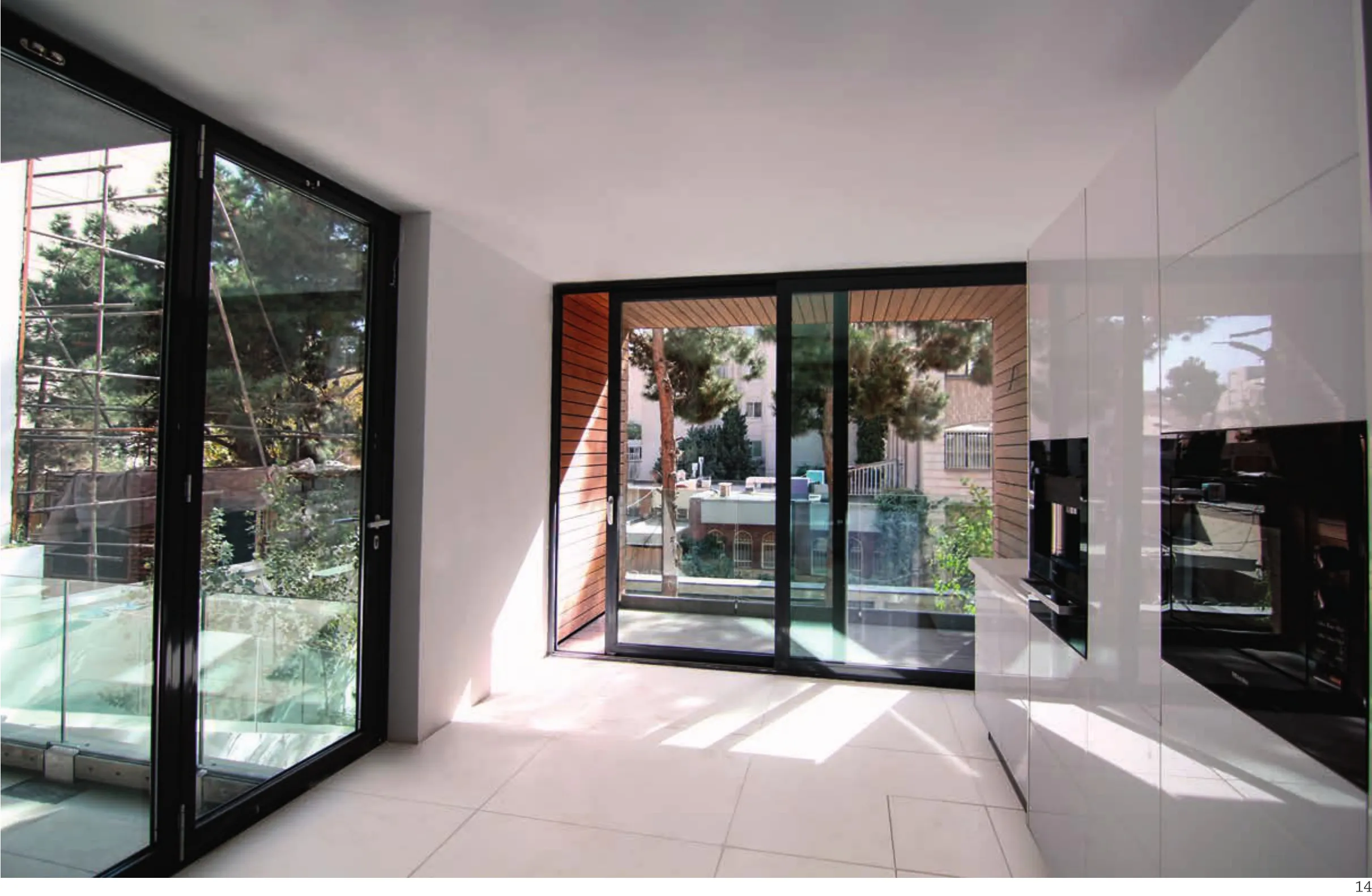
14 内景/Interior view
评论
张宇峰:显然,最大的兴奋点在于想象空间而非实际存在。房间的多角度旋转会瞬间改变空间与阳光的关系,如配以追踪太阳式的控制,似能灵活、全面地掌控每时每刻的阳光需求。这不禁让人联想到中国的一个古老智慧:在传统民居和院落中,人们择地而栖,因时因地寻找着适应气候的舒适角落,现代科技赋予了这一智慧重生的更多可能。还有多变空间、全生命周期居住等现代城市衍生的真实需要,似乎都能在其中找到可实现的技术和设计路径。
来自技术专家的点评
冯雅:不确定性和灵活性住宅设计理念是现代人的追求,该建筑在室内空间形态变化和建筑立面变化上独具创新,使其能够为人提供季节性的动态居住模式不同的环境要求。建筑空间形态变化创造出夏季开敞、通透、良好通风且带有宽大露台的空间;相应在寒冷多雪的冬天,形成自行闭合紧凑的温暖空间,使居住建筑令人兴奋的空间转换成为可能。但建筑遮阳利用了传统的固定结构空间、中庭空隙、固定空间和移动空间相互遮挡组成,相对遮阳系统简单、固定,无创新性。
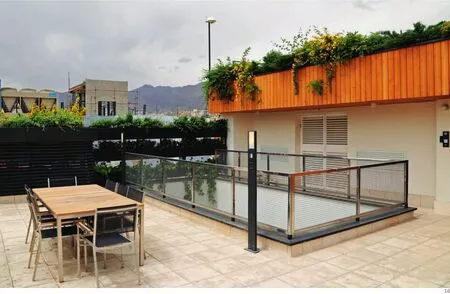
16 外景/Exterior view
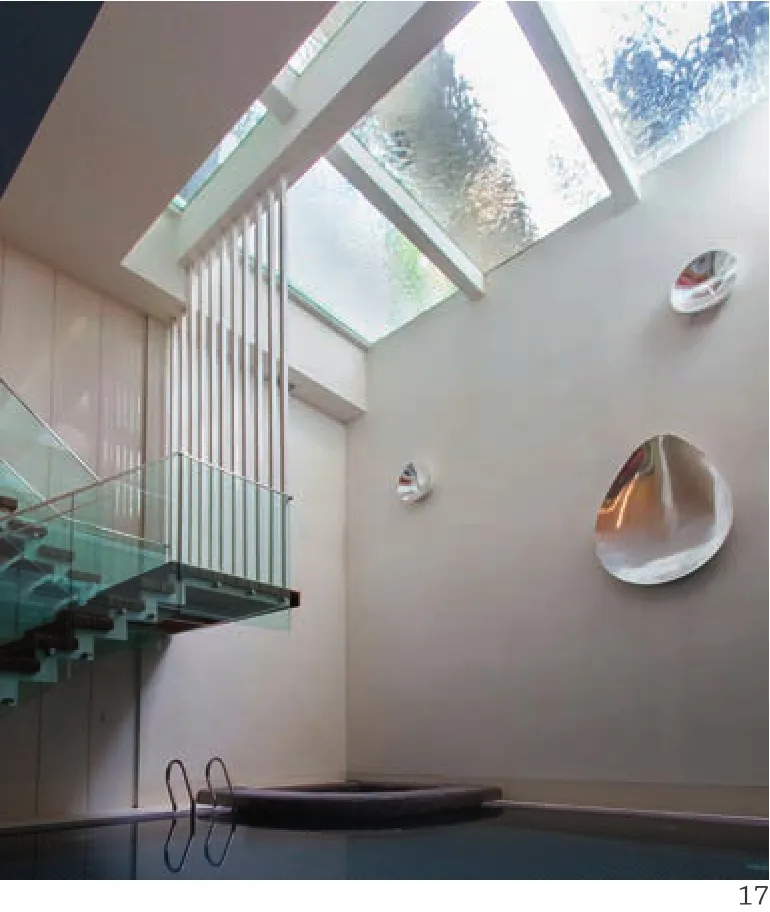
17 水景/Waterscape
Comment
ZHANG Yufeng:Apparently, the sharpest focus of excitation lies in the imagination space rather than the reality. The multi-angular rotation of room can instantly change the space and sun relation, and the every-time sunshine requirements are expected to be flexibly and completely met by adding suntracking control. It spontaneously calls to mind of a Chinese ancient wisdom: in the traditional houses and courtyards, people from time to time chose a place to be living, which is always climatic adaptive and comfortable. The modern science and technology gives the old wisdom more possibilities of rebirth. The feasible technology and design approaches seems emerge as well, to meet the real requirements from the modern cities like variable space and lifecycle residence.
From technical expert
FENG Ya:Uncertainty and flexibility are two characters people pursuit in the vision of modern residence design,and this building is especially creative in terms of indoor spatial changes and building façade changes, enabling itself to provide people with different environmental conditions for dynamic living modes over seasons. In summer time,the change of spatial forms creates a broad terrace space that is open, transparent, well ventilated. Correspondingly,in the cold and snowy winter, a self-enclosed compact and warm space is formed. Then there is possible to be an exciting spatial conversion in the residential building.However, the building's shading system is formed in a conventional way by the fixed structure space, the atrium void, the fixed space and the movable space blocking each other. It is relatively simple and invariant, without much innovation. (Translated by CHEN Xi)
